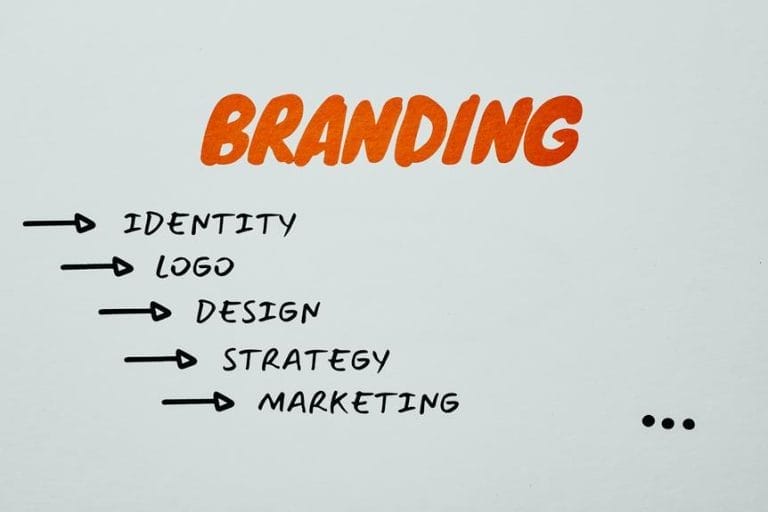Are you aware that increasing customer retention rates by just 5% can boost your business’s revenue by up to 95%? It’s true!
In today’s competitive market, focusing on customer loyalty and retaining your existing customers is crucial for long-term success. By keeping your customers engaged and satisfied, you not only encourage repeat purchases but also establish a reliable source of revenue.
Acquiring new customers can be costly, so investing in customer retention makes financial sense. In this article, we will explore the strategies and tools you can utilize to enhance customer loyalty and drive revenue growth.
From analyzing customer retention metrics to personalizing customer experiences, we will provide you with actionable tactics to boost your business’s success.
Key Takeaways
- Customer retention is crucial for the long-term success of a business, as it contributes to revenue stability and decreases costs.
- Retaining existing customers is more cost-effective than acquiring new ones.
- Loyal customers are more likely to become advocates for your product or service.
- Personalization and delivering valuable customer experiences are effective strategies for improving customer retention.
Definition and Importance of Customer Loyalty
Customer loyalty is a vital aspect of your business, as it increases the number of users who continue to use your product or service over time. It reflects your ability to satisfy your customers and keep them coming back to you instead of going to your competitors.
Calculating retention rate and conducting customer churn rate analysis are essential for understanding the health of your business. By retaining customers, you encourage repeat purchases and establish a steady source of revenue. Acquiring new customers is more expensive than retaining existing ones, making customer retention a cost-effective strategy.
Loyal customers are more likely to become advocates for your product, attracting new customers and increasing your market share. Demonstrating value to customers early and often is crucial for long-term retention.
Customer Retention Metrics
To effectively measure and evaluate the success of your customer retention efforts, it’s crucial to track and analyze key metrics. Retention rate analysis allows you to determine the percentage of existing customers who remain loyal, providing insights into the effectiveness of your retention strategies.
Understanding the impact of customer churn is equally important, as it measures the percentage of customers who stop doing business with your company. By monitoring these metrics, you can identify areas for improvement and take proactive measures to retain more customers.
Increasing customer retention has a direct impact on your revenue and profitability, as acquiring new customers is more expensive than retaining existing ones. By prioritizing customer retention and analyzing the data, you can boost customer loyalty and drive sustainable growth for your business.
Visualization and Analysis of Customer Retention
Improve your understanding of customer retention by visualizing and analyzing the data. By utilizing retention analysis methods, you can gain valuable insights into user behavior and engagement. Different visualization techniques, such as N-Day Retention, Unbounded Retention, and Bracketed Retention, allow you to examine the percentage of users who come back on specific days or within specific time brackets.
To help you better grasp the concept, here’s a table showcasing the different retention analysis methods:
| Retention Analysis Methods | Description |
|---|---|
| N-Day Retention | Shows the percentage of users who come back on a specific day |
| Unbounded Retention | Shows the percentage of users who come back on a specific day or later |
| Bracketed Retention | Allows you to choose a time bracket and view the retention graph |
Analyzing customer retention data is crucial for developing effective customer retention strategies. By understanding how users engage with your product or service, you can tailor your approach to maximize customer loyalty. These insights can help you identify areas for improvement, personalize customer experiences, and optimize your retention rates. By implementing data-driven strategies and utilizing the right tools, such as Amplitude, Hotjar, Hubspot, SurveyMonkey, and Yotpo, you can boost customer loyalty and drive revenue growth.
Tools for Improving Customer Retention
By utilizing data-driven tools, you can optimize customer retention and boost loyalty and revenue.
Two popular customer retention tools are Amplitude and Hotjar. These tools offer valuable insights into customer behavior, allowing you to understand why customers stay or leave.
Amplitude provides advanced analytics and segmentation capabilities, enabling you to track user engagement and identify opportunities for improvement.
On the other hand, Hotjar offers heatmaps and session recordings, giving you a visual representation of how customers interact with your website or app.
By comparing Amplitude and Hotjar, you can choose the tool that best fits your needs and helps you improve retention rates.
Additionally, customer behavior analysis is another powerful tool for improving retention rates. By analyzing how customers interact with your product or service, you can identify patterns and make data-driven decisions to enhance the customer experience and increase loyalty.
Strategies to Improve Customer Retention
Focus on engaging your current and dormant users to enhance customer retention.
One effective strategy is analyzing customer behavior to gain insights into their needs and preferences. By understanding how customers interact with your product or service, you can tailor your offerings to meet their expectations.
Additionally, leveraging customer feedback is crucial for improving retention rates. Actively seek out feedback from your customers and use it to make necessary improvements to your product or service. By incorporating their suggestions and addressing their concerns, you show your customers that you value their opinions and are committed to providing a great experience.
This not only increases customer satisfaction but also fosters loyalty, leading to higher retention rates.
Using Data to Drive Retention Rates
To maximize your customer retention rates, harness the power of data-driven insights.
Using data analytics to optimize customer retention is essential for the long-term success of your business. By analyzing customer behavior and preferences, you can identify patterns and trends that will help you implement personalized marketing strategies for customer retention.
Data allows you to understand your customers on a deeper level, enabling you to deliver targeted and relevant messaging that resonates with them. With the right data, you can anticipate their needs, address their pain points, and provide customized solutions. This level of personalization can significantly enhance customer satisfaction and loyalty, ultimately leading to increased retention rates and revenue.
Identifying Key Drivers for Retention
To effectively identify the key drivers for retention, you need to analyze customer data and understand their preferences and behaviors. By delving into the data, you can uncover valuable insights that will guide your retention strategies.
Look for patterns in customer behavior, such as frequency of purchases, engagement with your product or service, and response to marketing campaigns.
Additionally, implementing customer feedback mechanisms, such as surveys or feedback forms, can provide invaluable information about what your customers value most and what areas need improvement. Take advantage of tools like Amplitude, Hotjar, and SurveyMonkey to gather and analyze this feedback.
Democratizing First-Party Data
Democratize your first-party data to empower your team in accurately calculating retention metrics. By democratizing data analysis and leveraging customer behavior data, you can unlock valuable insights that will help you improve customer retention.
When you make your first-party data accessible to everyone on your team, it enables them to understand customer trends, preferences, and behaviors. This democratization of data analysis allows for a more comprehensive understanding of your customers and their needs, which can then inform your retention strategies.
Creating Valuable Customer Experiences
Your goal is to create valuable customer experiences that foster loyalty and drive revenue growth.
To achieve this, it’s essential to listen to your customers and understand their needs. Customer feedback analysis and customer satisfaction surveys are powerful tools that can provide valuable insights into the customer experience.
By gathering feedback and analyzing it, you can identify areas for improvement and make necessary changes to enhance customer satisfaction. This data-driven approach allows you to tailor your products and services to meet customer expectations, ultimately fostering loyalty and increasing revenue.
Delighting Customers at Every Stage
By consistently delivering exceptional experiences, you can delight customers at every stage, fostering loyalty and driving revenue growth. Delighting customers is a key aspect of customer satisfaction measurement, as it directly impacts their overall experience with your product or service. To achieve this, you need to understand the different stages of the buyer’s journey and tailor your approach accordingly.
| Stage | Delighting Customers |
|---|---|
| Awareness | Provide informative and engaging content to capture their attention. |
| Consideration | Offer personalized recommendations and demos to showcase the value of your product. |
| Purchase | Streamline the buying process and provide excellent customer support to ensure a smooth transaction. |
| Usage | Continuously exceed expectations by offering new features, updates, and proactive support. |
| Loyalty | Reward loyal customers with exclusive perks, discounts, and personalized offers. |
Tools for Improving Customer Loyalty
To improve customer retention, you can utilize various tools that help optimize client retention rates. One of the most effective tools is using data-driven insights for customer retention. By analyzing customer behaviors and preferences, you can identify the key drivers for retention unique to your business and create personalized experiences that keep customers coming back.
Another important tool is implementing effective customer onboarding strategies. By providing a smooth and seamless onboarding process, you can ensure that customers understand the value of your product or service from the beginning and are more likely to stick around.
Tools such as Amplitude, Hotjar, Hubspot, SurveyMonkey, and Yotpo can assist you in improving customer retention by providing valuable insights and helping you create exceptional customer experiences.
Focusing on Current and Dormant Users
Maximizing customer loyalty and revenue requires directing your attention towards current and dormant users.
To engage dormant users, it’s crucial to leverage customer feedback and use data-driven strategies. By analyzing customer behavior and preferences, you can identify the reasons for their inactivity and develop personalized approaches to re-engage them.
Utilize customer feedback to understand their needs and expectations, and then tailor your offerings accordingly. Implementing improvements based on customer input shows that you value their opinions, which can lead to increased loyalty and retention.
Additionally, using data to identify patterns and trends among dormant users can help you create targeted marketing campaigns and offers to rekindle their interest.
Implementing Customer Feedback
Engaging with customer feedback is essential for improving customer retention and driving revenue growth. By implementing customer feedback and analyzing user behavior, you can gain valuable insights into what your customers want and need. This allows you to make data-driven decisions that will enhance their experience and keep them loyal to your brand. To effectively implement customer feedback, consider using the following strategies:
| Strategy | Description | Benefits |
|---|---|---|
| Collect Feedback | Regularly gather feedback from your customers through surveys, reviews, and social media. | Gain insights into customer preferences and pain points. |
| Act on Feedback | Use the feedback received to make improvements to your products, services, and overall customer experience. | Enhance customer satisfaction and loyalty. |
| Communicate Changes | Inform your customers about the changes you have made based on their feedback. | Demonstrate that you value their opinions and are committed to meeting their needs. |
| Follow-Up | Reach out to customers who provide feedback to show appreciation and address any outstanding concerns. | Strengthen your relationship with customers and increase their loyalty. |
| Measure Impact | Continuously monitor the impact of the changes you have implemented and adjust your strategies accordingly. | Ensure that your efforts are driving positive outcomes and contributing to revenue growth. |
Implementing customer feedback not only shows your customers that their opinions matter but also allows you to make informed decisions that will improve their experience. By analyzing user behavior and acting on their feedback, you can create a customer-centric approach that fosters loyalty and drives revenue growth.
Personalized and Efficient Customer Support
For personalized and efficient customer support, prioritize understanding and addressing your customers’ needs. By tailoring your support interactions to each individual customer, you can create a more positive and satisfying experience.
Personalized support benefits both you and your customers. It shows that you value their unique concerns and are committed to finding solutions that meet their specific requirements. This level of attention and care builds trust and loyalty, increasing the likelihood of repeat business and positive word-of-mouth recommendations.
To achieve efficient customer service, implement strategies such as utilizing customer support software to streamline communication, providing self-service options for common inquiries, and empowering your support team with comprehensive training and resources.
Rewarding Customers for Loyalty
To boost customer loyalty and revenue, you can reward customers for their loyalty by offering exclusive perks and incentives. Creating customer loyalty programs is a powerful way to incentivize customers to continue doing business with you.
By offering rewards such as discounts, freebies, or access to exclusive events, you can make your customers feel valued and appreciated. This not only encourages repeat purchases but also fosters a sense of loyalty and connection to your brand.
To measure the effectiveness of loyalty rewards, you can track metrics such as the repeat purchase rate, customer retention rate, and net promoter score. These data-driven insights will help you understand how well your rewards program is resonating with your customers and whether it’s driving the desired outcomes of increased loyalty and revenue.
Conclusion
By focusing on customer retention, you can boost loyalty and revenue for your business. Retaining existing customers isn’t only cost-effective but also provides a steady source of income.
By utilizing metrics, analysis methods, and tools, you can visualize and understand customer retention better.
Implementing strategies such as personalized customer support and rewarding loyalty can further enhance retention efforts.
Remember, investing in customer loyalty is the key to long-term success and growth.
So why wait? Start prioritizing retention success today and watch your business thrive.







